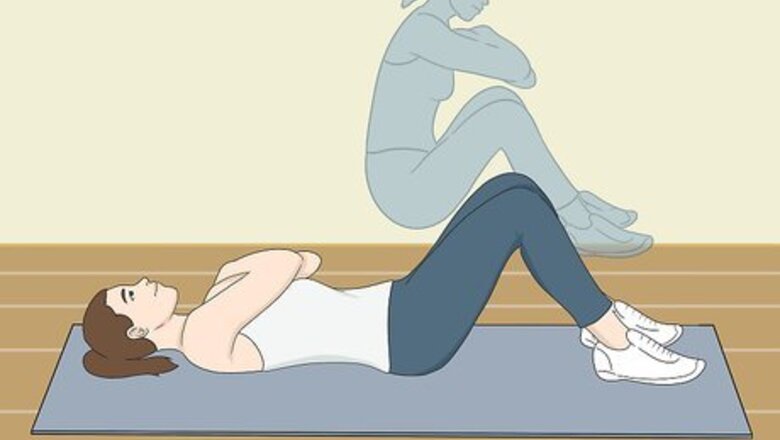
views
Doing an Ab Workout
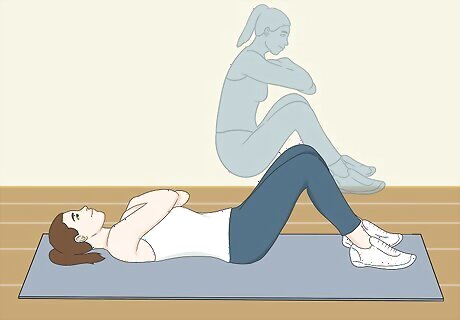
Start with sit-ups and/or crunches. To do a basic sit-up, lie on the floor with your knees bent and your feet flat on the floor. Cross your hands across your chest and smoothly lift your upper body, from your shoulder blades to your lower back, off of the ground. Sit all the way up, pausing for a moment at the top of your motion. Then, smoothly lower your body back down and repeat. Don't strain or use jerky movements and don't lift with your neck. The stress should be on your ab muscles, not your neck. Keep your back straight - never hunch while doing sit-ups. To do a crunch, which is easier than a sit-up, just lift your shoulder blades off the ground - not your whole upper body. Sit-ups and crunches work your central abdominal muscles. Your ab muscles, as a whole, run from the pelvis to just below the chest. The transverse muscles are rather large, but the rectus abdominus muscles are fairly thin. For the rectus abdominis to appear beneath the skin, you will need to both build your core and reduce fat around your waistline. For well-rounded, sculpted abs, it's important to hit every part of your abdominal region. Another good core workout is the plank exercise. This exercise, which is a good core workout on its own, is highly versatile - by adding different poses and/or movements to the basic plank, you can work a wide range of muscles. When you're doing crunches, exhale slowly for 5 seconds on your way up, then inhale slowly for 5 seconds on your way down. Doing slow, controlled crunches like this is more effective than doing faster crunches.
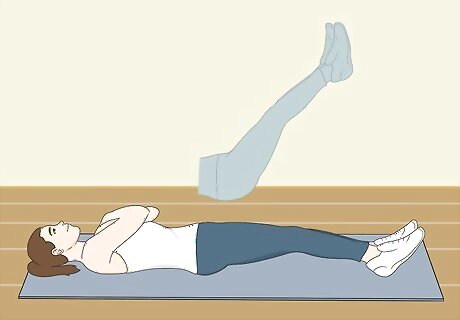
Do leg lifts. Lay on the floor with your legs straight and pulled together. Keeping your legs straight, slowly and smoothly lift your legs to a vertical position so that they're pointing at the ceiling. Gently lower your legs to the floor and repeat. Don't separate your legs or bend your knees as you do this exercise unless you find it too difficult - in this case, modify the exercise so that you're bringing your knees to your chest, rather than pointing your feet towards the ceiling. For an extra challenge, try holding a medicine ball or a small weight between your legs as you do this exercise! Leg lifts work your lower abs. Though they're especially hard to work and "define," well-toned lower abs can take your six-pack to an eight-pack! The core muscles play an important role in hip and spine stabilization, which, if not maintained, can lead to a back injury. Other lower ab exercises like reverse crunches and hanging leg lifts also target the hard-to-hit zones just above your hips, contributing to a toned upper pelvic area.
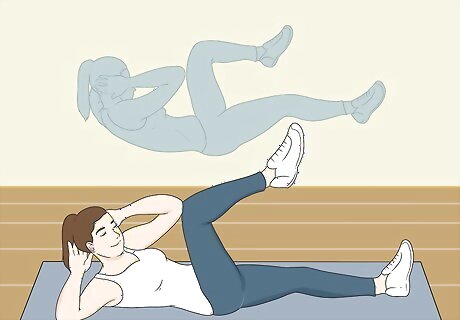
Do bicycle crunches. Lay on your back in the basic sit-up position with your knees bent and your feet flat on the floor. Tuck your palms behind your head, keeping your elbows bent. Raise your right knee up towards your chest. As you raise your knee, gently lift and twist your upper body, touching your left elbow to your right knee. Ease your upper body back down and lower your right knee as you simultaneously raise your left knee, touching it to your right elbow. Repeat this motion, alternating knees, and elbows. Bicycle crunches work your obliques, which are a must for any thorough ab workout. Not only are these muscles on the side of your torso important in terms of abdominal strength and core stabilization, but they also look amazing when they're cut and defined. Firm oblique muscles will make your sides appear tight and trim, giving a slimming effect. Your obliques will likely be the first visible muscles appearing after doing ab work for a while. These will appear as thin lines from the lower ribs down to your hip bones. Oblique sit ups and side planks, are also great exercises for your obliques. Within minutes, you'll feel that satisfying burn in your sides!

Hit your legs, glutes, and back with lunges. One great exercise which hits your legs and glutes while simultaneously using your hips, back, and abs as secondary muscle groups is the lunge. To do a lunge, begin by standing straight upright with your feet hip-width apart. Take a big step forward with your right leg. Bend your right leg and lower your body down towards the floor, keeping your back straight, until your right knee is bent at 90 degrees. Push yourself back up to a standing position, keeping your weight on your right foot. Repeat this motion with your left leg. Do this exercise slowly and smoothly - straining or jerking can hurt your knees or back. Though you're probably most interested in working your abs to get a tight stomach, a good, varied workout is essential for good posture, balance, spine stabilization, and overall health. Don't neglect any muscle group between your chest and your knees - you may regret it! There are a huge variety of exercises for your supporting core muscles. You can try yoga poses like the the warrior pose, cobra pose, or camel pose. Supermans and pointing dog exercises can also help. A strong, solid core is an absolute must when going for sculpted abs.

Don't believe common ab workout misconceptions. Because tight abs are so widely desired, ab workouts naturally attract urban legends and other unsubstantiated claims. Don't believe everything you hear when it comes to building sexy abs - if a certain piece of information sounds too good, it probably is. You can't spot-burn stomach fat. This is a widely-circulated myth. It doesn't matter how intensely you work out one specific body part - exercise doesn't remove fat from that specific body part. Rather, fat is lost gradually from the entire body. To lose belly fat so that your abs will show, you'll need to lose fat all over. You shouldn't only do ab exercises. Doing countless crunches will give you stronger ab muscles, but you may not see the results in the form of tight, sculpted abs. Often, for someone to get abs, she must also diet and make other lifestyle changes (see below) for the abs to become clearly defined.
Burning Fat with Lifestyle Changes

Set aside time in your schedule for exercise. As with any exercise routine, the best way to see improvements in your ab muscles is to be persistent. Exercise routines are most successful when they're repeated consistently over a long period of time. If you're ready to work for the toned stomach you deserve and you haven't already established an exercise routine, try to set aside about an hour each day to exercise. Practice a healthy mix of strength and cardio exercise - a good policy for beginners is to do strength-building and cardio exercises on alternating days. Even if you just want a tight stomach and you're not interested in exercising the rest of your body, your exercise routine should be varied and balanced. Not only will a well-balanced routine improve your overall look and physicality - but it will also be better for your abs. Core muscles are used for support in virtually all strength exercises, so the greater variety of exercises you do, the better your abs and core! Don't do ab exercises every day since your muscles need time to rest and recover. Instead, do ab exercises every 3 days.
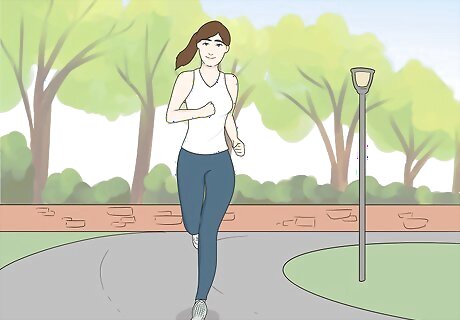
Pinpoint fat-burning opportunities. Unfortunately, exercise isn't always enough to get amazing abs. You may get strong ab muscles from an intense ab and core workout, but if your new muscles are covered up by belly fat, you won't get the visual results you're going for. To burn fat, it may be necessary to make certain lifestyle changes so that you run a calorie deficit - that is, you use more calories than you take in. To begin, try to change your current daily routine so that you use more calories throughout the day. If, for instance, you drive to school or work, try biking or running instead. If you spend most of your free time watching TV, try signing up for a local amateur sports team or simply going for a jog. Over the long term, these minor changes can help you cut down on lingering body fat, making your abs much more defined.
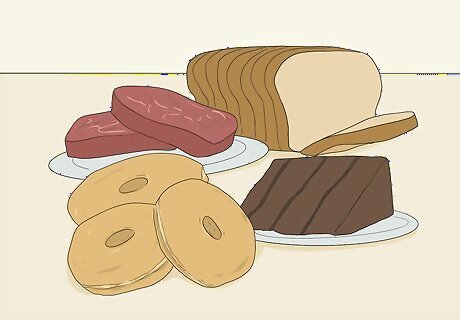
Cut down on calories. One sure-fire way to lose weight is simply to eat less. There is debate about how often and how much you should eat for optimal weight loss - the most important thing to remember for weight loss is simply to take in fewer calories from food than you use throughout the day. Calculate your basal metabolic rate, then count the calories from the food you eat throughout the day. A healthy weight loss goal is to lose about one or two pounds a week. One pound of fat is 3500 calories. To lose a pound a week, you need to cut 500 calories per day from your diet. Make sure that any diet you plan to participate in is realistic, sensible, and safe. You need to eat at least 1200 calories a day. Don't starve yourself or neglect your nutrition, or you may seriously endanger your health.
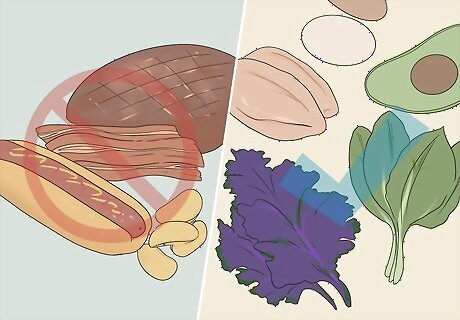
Change the types of food you eat. When it comes to dieting, it's not all about how much you eat - it's also about what you eat. Try to cut as many processed foods as you can out of your diet - as a general rule, if you can't immediately tell what plant or animal food was made from, it probably counts as "processed." Also, try to cut out high-fat and high-sugar dishes. Instead, supplement your diet with vegetables (especially high-nutrient vegetables like kale and spinach) whole-grain carbs, lean protein (yogurt, chicken breast, eggs, and certain fish, for instance), and limited amounts of healthy fats (like olive oil, avocado, and nuts.) Drink as much water as you can! It's refreshing, zero-calorie, and it's been found to promote weight loss.
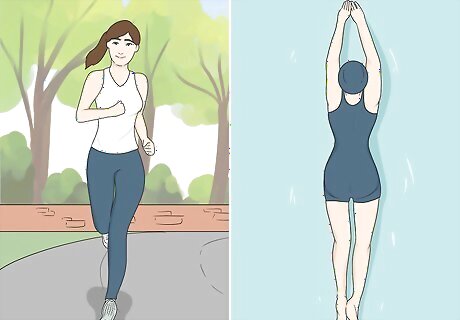
Do cardio. Cardio (or "aerobic") exercise is a great way to burn fat. Intense cardio workouts, like running, swimming, and cycling, burn lots of calories. If you're looking to burn fat, consider devoting time each week to cardio exercise. It's a great way to widen the gap between the number of calories you eat and the number of calories you use every day. However, beware - if you increase the amount of food you eat in response to a new cardio routine, you may not burn fat. As with most forms of exercise, pursue a new cardio routine with moderation. Don't go overboard - if you devote all your time to cardio and none of your time to strength-building exercise, eating healthy, and resting, you may exhaust yourself and be left with disappointing results.
Doing a Basic Crunch
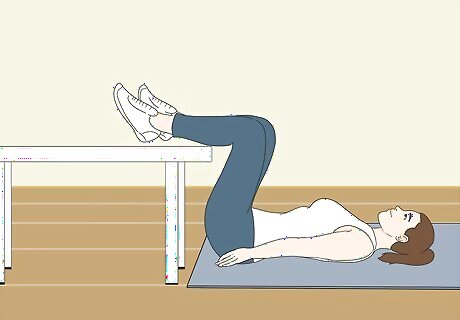
Lie on your back. For comfort, use a foam exercise mat or a carpeted section of the floor. Place your heels on a low table at an angle of at least 90 degrees.
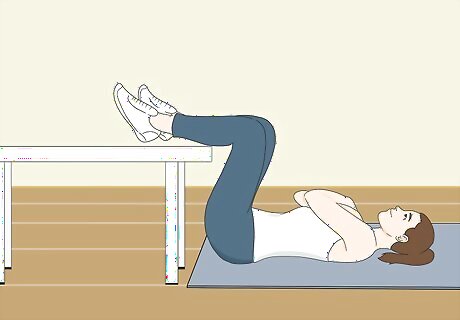
Cross your hands over your chest. You may have seen people wrap their fingers behind their heads while doing crunches - if you do this, you may accidentally stress your neck muscles. By wrapping your hands across your chest, you spare yourself the possibility of neck pain.
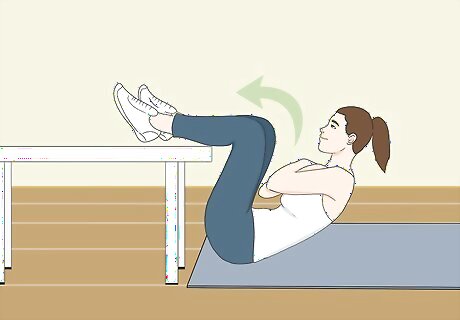
Tense your abs and curl your upper body starting with your head. Use your ab muscles to smoothly lift your upper body (keeping your neck relaxed) until you have gone as far as you can without lifting your lower back off the ground. Never use jerky movements - these can hurt your back. Exhale slowly for 5 seconds as you do this.
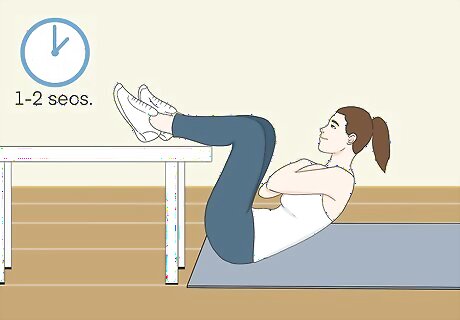
Hold this "crunched" position for several seconds. Begin to lower your upper body back down smoothly and slowly. Inhale slowly for 5 seconds as you lower yourself back down.
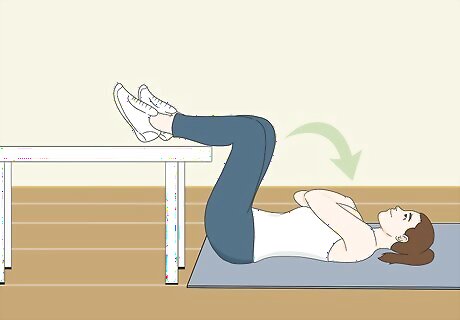
Repeat. Each time you reach the top of your crunch, hold this position for a second or two, then let yourself down slowly and repeat. If, at any point, you experience pain in your lower back, stop.
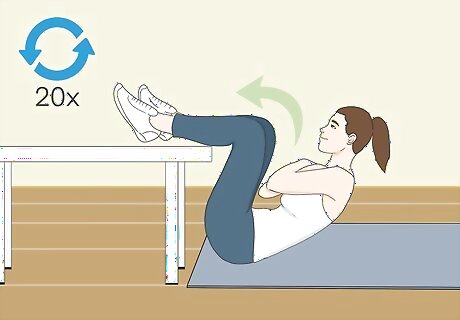
Repeat this exercise 20 times. After 20 repetitions, rest briefly (less than 1 minute), then do another set of 20. Do 2-4 sets, or go until you "feel the burn" - a light soreness in your abs that signifies the muscles in your stomach have been worked out.



















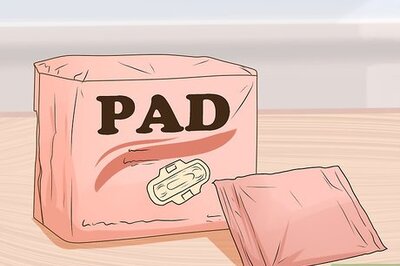
Comments
0 comment